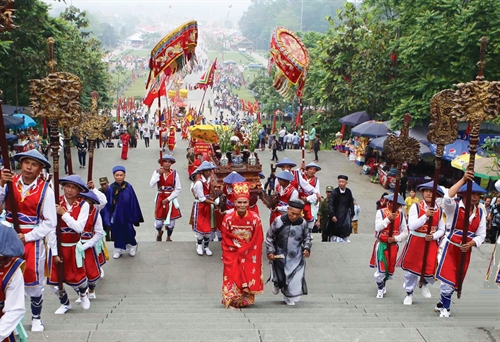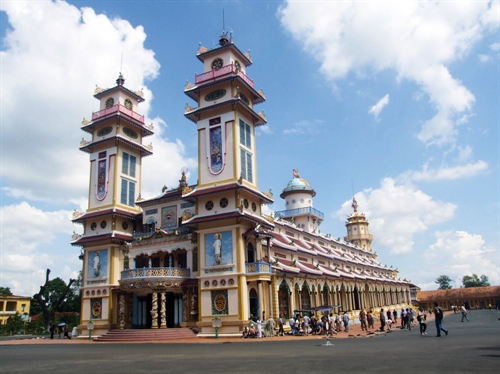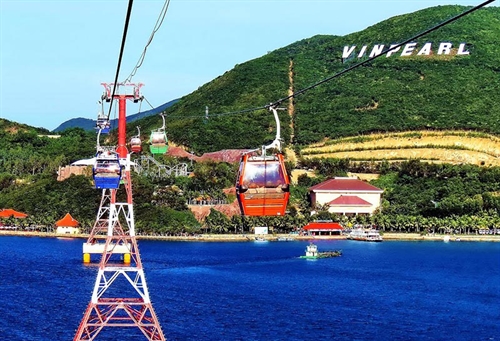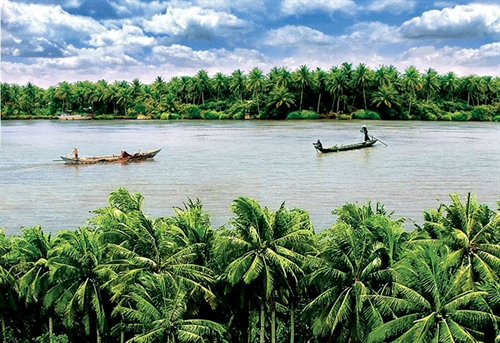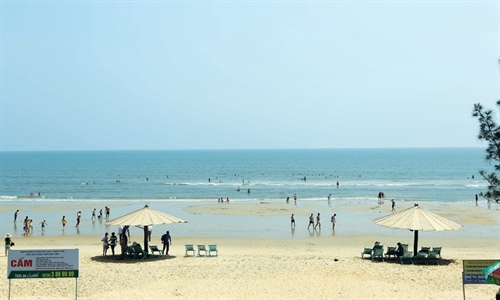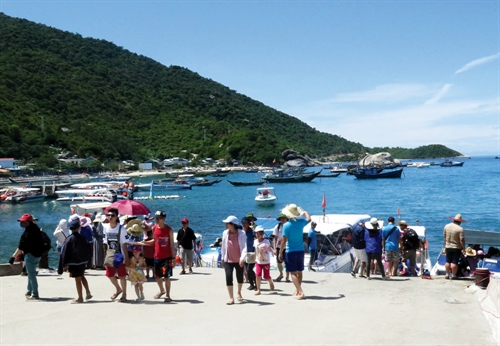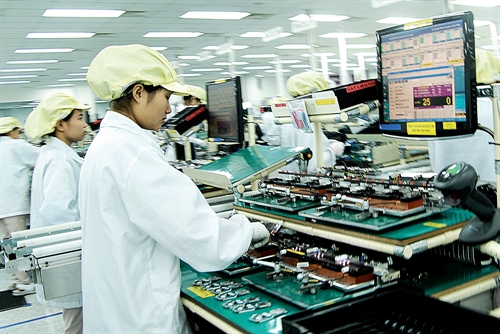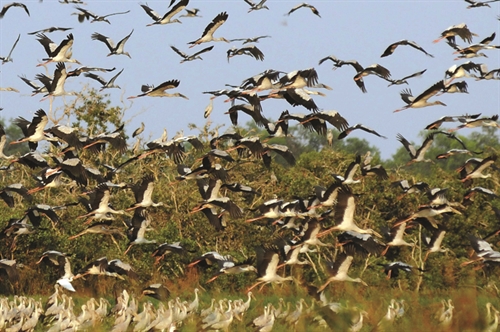Located in the Mekong River delta, Soc Trang province borders Hau Giang province to the northwest, Bac Lieu province to the southwest, Tra Vinh province to the northeast and the East Sea to the southeast. As one of the 13 provinces in the delta, the province boasts three large estuaries facing the East Sea, namely Dinh An, Tran De and My Thanh and a dense network of canals. Covering 3,311 square kilometers, Soc Trang has a population of some 1.3 million and is home to Kinh (Viet) being the most populous, followed by Khmer and Hoa. It has a provincial city with the same name, Nga Nam and Vinh Chau towns and eight districts of Chau Thanh, Cu Lao Dung, Ke Sach, Long Phu, My Tu, My Xuyen, Thanh Tri and Tran De.
With a coastline of 72 kilometers and three large estuaries, Soc Trang has big potential for the development of renewable energy, marine economy and tourism. The Prime Minister has agreed on principle to incorporate the province’s Tran De seaport in the master plan on development of Vietnam’s seaport system. As an international gateway seaport with its main wharf situated at Tran De estuary, once approved the seaport will be capable of accommodating ships of up to 100,000 deadweight tons, serving the Mekong River delta’s import and export.
FDI attraction
In 2017, Soc Trang recorded a gross regional domestic product growth rate of 7.01 percent and ranked 44th out of 63 provinces and cities in the provincial competitiveness index (PCI).
At present, the province is home to six industrial parks, namely Song Hau, Nga Nam, My Thanh, Dai Ngai, Tran De and An Nghiep.
As of May 2018, the province has attracted 15 foreign-invested projects with a combined registered capital of USD 238 million, ranking 53rd out of 63 provinces and cities nationwide, the Quan Doi Nhan Dan (People’s Army) daily reported.
“But most of these projects are small and the province has failed to attract large ones so the spillover effect and contributions of FDI enterprises to the province’s GDP, budget, export revenue and growth model restructuring remained inconsiderable,” according to Deputy Minister of Planning and Investment Nguyen Van Hieu.
At the Soc Trang provincial investment promotion and start-up mobilization conference 2018 that took place in Soc Trang city on June 19, Prime Minister Nguyen Xuan Phuc suggested the province combine the development of hi-tech agriculture adaptable to climate change and clean fisheries associated with processing industry with eco-tourism.
To attract investors, Prime Minister Nguyen Xuan Phuc asked the local authorities to raise the province’s gross domestic product growth rate and ranking in the PCI.
Chairman of the Soc Trang People’s Committee Tran Van Chuyen said the province was calling for investment in hi-tech agriculture associated with processing industry, renewable energy and tourism. Soc Trang was also seeking investors to deal in infrastructure facilities of industrial parks and clusters, trade centers, supermarkets and sea transportation hubs, he added.
“Soc Trang always attaches importance to pollution-free, green and sustainable development,” affirmed director of the provincial Planning and Investment Department Lam Hoang Nghiep.
Apart from the Soc Trang Investment Promotion Center and a working team, the province is asking permission to set up a public administration center to help investors complete investment formalities more quickly.
Enterprises could meet the Chairman of the provincial People’s Committee or Secretary of the provincial Party’s Committee in person to exchange ideas to address their problems and remove their difficulties, said Chairman Chuyen who has pledged to create the most favorable conditions for investors.
Under the provincial People’s Committee’s Decision 23 dated June 24, 2011 on investment incentives and support policies, domestic and foreign investors will be provided with land rental support. Investment projects in the sectors eligible for special investment incentives will not have to pay for infrastructure facilities built outside the fences of their projects. In addition, if fully satisfying the prescribed conditions, investors implementing education-training, vocational training, healthcare, culture-sports or environmental protection projects will be entitled to land rental or land use levy exemption or reduction or permitted to change land use purposes.
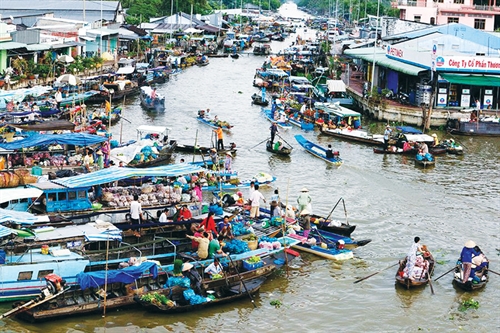 |
Hospitality potential
Soc Trang is not only well-known for Ok Om Bok (moon worship) and ghe ngo (light boat) race of the Khmer but also worship places of the Kinh, Khmer and Hoa people which are famous tourist destinations. They include the Doi (Bat) pagoda, also known as Mahatup or Ma Toc pagoda, the Buu Son pagoda made of clay, the Kh’leang Pagoda - the oldest one in the province, and the Chen Kieu (Porcelain Bowls) Pagoda. The province also boasts banh pia (pastry made of salted egg yolk and bean paste) and lap xuong (sausages made of lean and fat pork) village and the bamboo and rattan weaving village in Phu Tan commune, Chau Thanh district. Other famous tourist destinations in the province also include the oldest and most attractive Nga Nam (five-way intersection) floating market and Tan Long stork garden in Nga Nam town and Ho Nuoc Ngot (freshwater) park in Soc Trang city.
The province was expected to receive 1.2 million tourist arrivals, including 40,800 foreigners, and earn a turnover of VND 428 billion (USD 18.6 million) in the first half of the year, Quynh Phuong Kieu, deputy head of the Soc Trang Culture, Sports and Tourism Department’s Tourism Management Office, told the Vietnam Law and Legal Forum magazine.
Soc Trang has 11 two-star and 21 one-star hotels and 36 guest houses, Kieu said, adding that the Ngoc Thu hotel remained the only three-star one in the province.
Director of the Soc Trang Culture, Sports and Tourism Department Tran Minh Ly said the hospitality sector was calling for investment in Ho Be eco-tourist zone in Vinh Hai commune, Vinh Chau district; Song Phung eco-tourist zone in Song Phung commune, Long Phu district; and a stork garden eco-tourist zone in Gia Hoa I commune, My Xuyen district.
The province expects to receive more than 1.6 million tourist arrivals, including 65,300 foreign tourist arrivals and earn a turnover of VND 670.2 billion (USD 29.1 million) this year.
To achieve the target, the hospitality sector will compile a book about the legends of Soc Trang’s tourist destinations, support the development of art performance programs for tourists and organize cuisine festivals. It will also print and distribute Soc Trang tourism brochures and leaflets. In addition, the province also intends to develop homestay models in My Tu, Ke Sach, Cu Lao Dung and Chau Thanh districts.
By 2020, the province will have one national tourist spot, one provincial tourist zone and seven provincial tourist spots which can receive 1.7 million tourists.
To turn tourism into an environment-friendly and professional economic sector, the province will invest in tourism infrastructure facilities and diversify tourist products. It will also further develop spiritual, cultural-festival, historical relic and eco-tourist products.
Last year, the province welcomed over 1.2 million tourists, including about 37,500 foreigners.- (VLLF)
